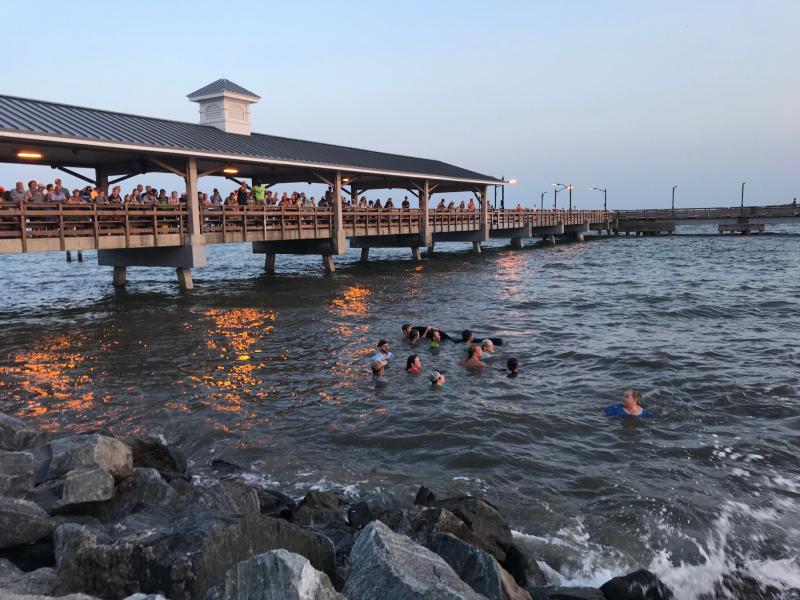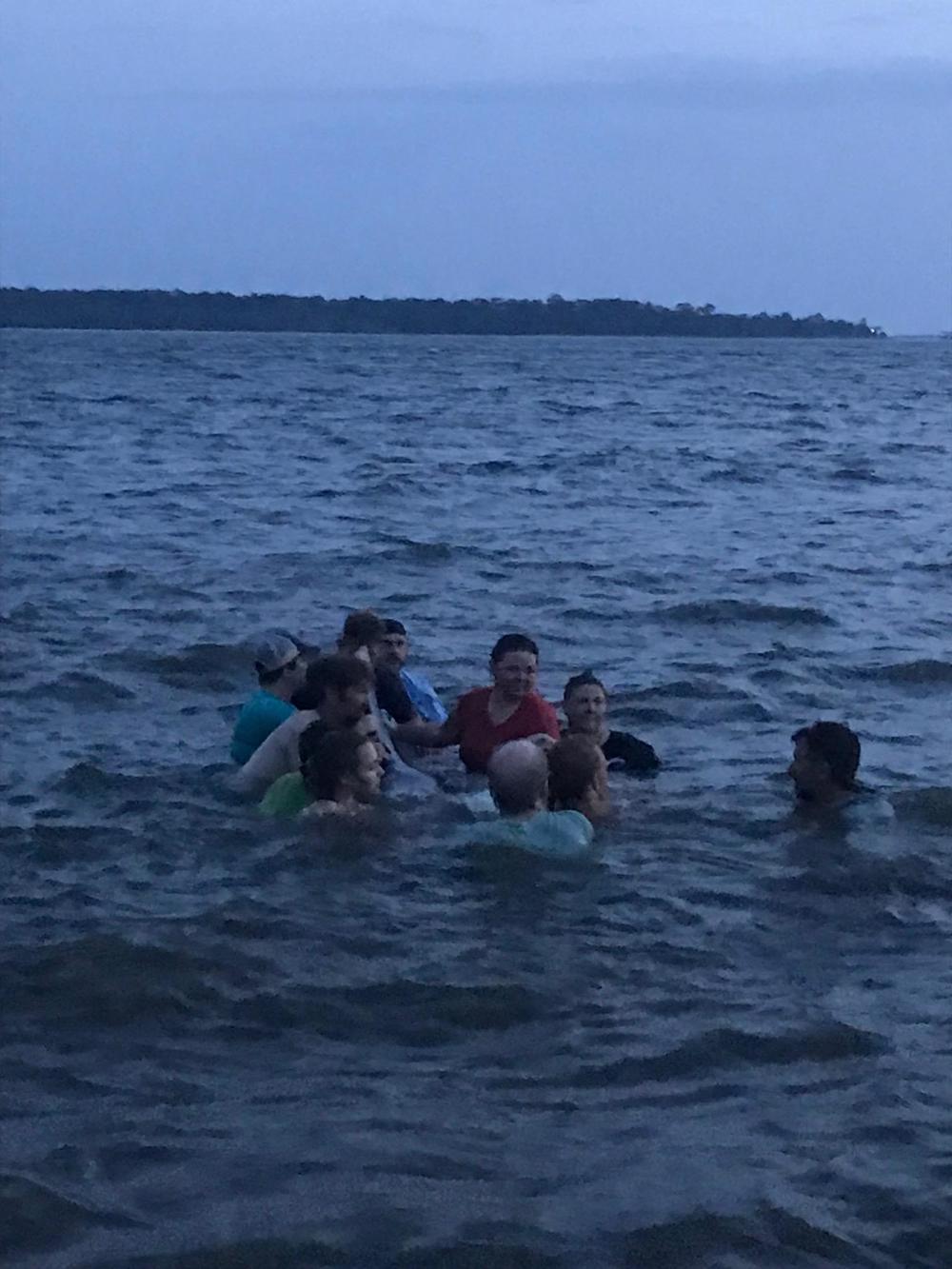Section Branding
Header Content
Pilot Whales Safe After Rare Georgia Beaching
Primary Content
Summer fun quickly devolved into a rescue operation July 16 when a pod of short-finned pilot whales stranded on St. Simon’s island. Bystanders rushed into the ocean to push the frantic animals back out to sea, saving all but three.
Georgia’s Department of Wildlife Resources provided an update Wednesday, stating that the pod had been spotted heading east to deeper waters. DNR’s Clay George said he is “cautiously optimistic” that the rescue mission was successful.
RELATED: Pilot Whales Beach Themselves On St. Simons Island Shore
So, what if no one had stepped up?
The whales likely would have ended up like the long-finned pilot whale pod found a few days later in Iceland.
Approximately 50 dead whales were spotted on the shore by passengers on a routine helicopter tour of a remote island, according to the Associated Press.
It is not unheard of for two pilot whale strandings to happen within days of each other. The species, which is actually a type of dolphin, is so social that if one animal in the group becomes injured or sick, the entire pod will follow it to shore, George said.
MORE:
- On Georgia’s Coast, Right Whales On Edge Of Extinction
- Seismic Testing Could Proceed Despite Offshore Drilling Pause
- 6 Deaths Bring Right Whales Closer To Extinction
Other reasons for a strand could be predator evasion, or an attempt to run away from signals from a military sonar test.
But despite the fact that pilot whales beach themselves more often than any other cetacean, the strandings in Iceland and St. Simons were unusual for multiple reasons, experts said. Robert Arnar Stefansson of the Icelandic Institute of Natural History told a local radio station that the number of dead whales was exceptionally large.
The St. Simons stranding was also unprecedented because a pod of pilot whales had never stranded in that area before, and it was “exceedingly rare” for an incident like this to happen in Georgia.
The DNR conducted a necropsy of the three dead whales in order to determine what caused the mass stranding in Georgia. This is the beginning of a diagnostic process that George said could potentially go on for weeks.
This stranding comes after reports that six of the remaining 411 North Atlantic right whales, Georgia’s state marine mammal, had died off the Canadian coast in June.
While pilot whales are not considered an endangered species, many cetacean and whale species are endangered or threatened, according to the World Wildlife Fund.


